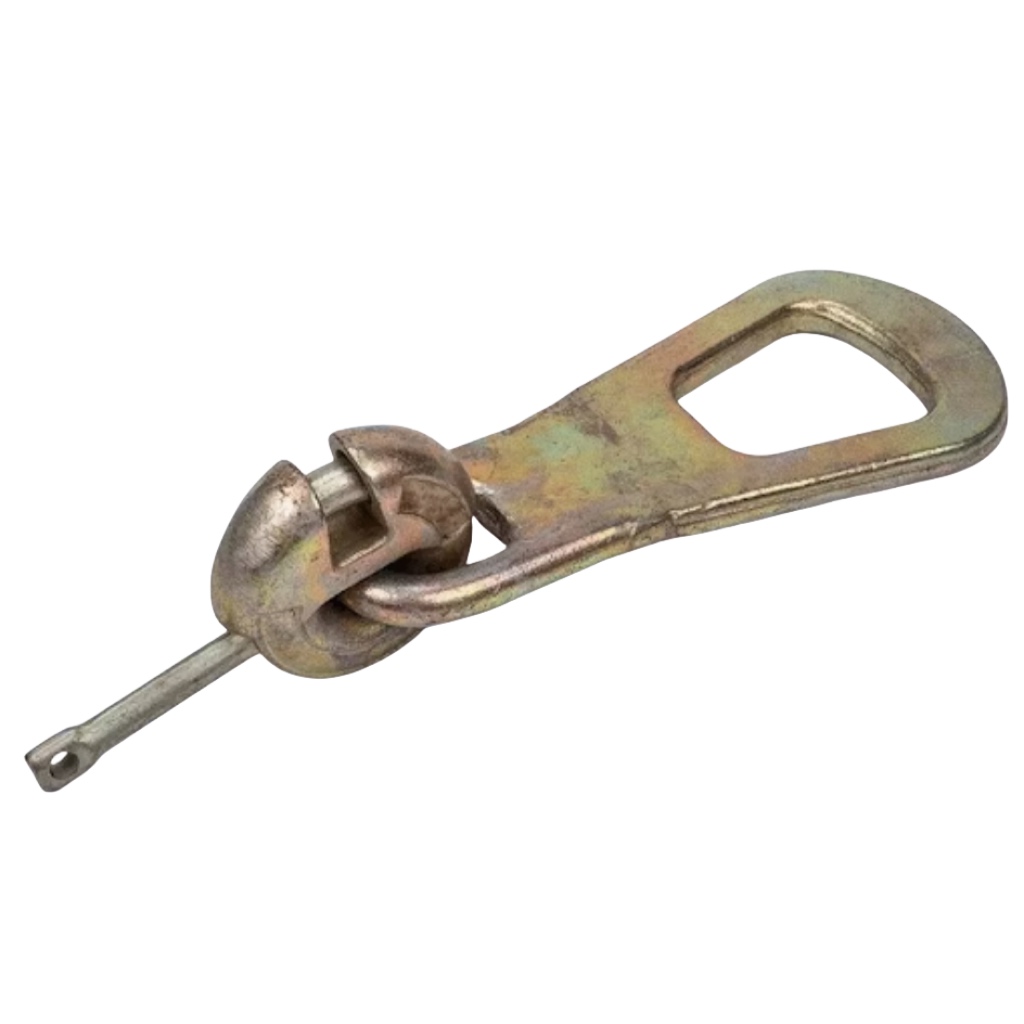Product Description
Material and safety of ring Clutch
LIDA CE certificated lifting clutch (ring clutch) with high-grade 42CrMo4 special casting head clutch and forged bolt. The forged bolt needs the same materials as the head. The lifting clutch hook was made with enough thickness and high strength steel. The lifting clutch hook welded needs high quality and deeply to approval with X-ray machinery. The bail is made from robust, hardened, and tempered cast steel. The LIDA Ring Clutch meets the requirements of the “Safety regulations for lifting precast concrete units”.

Ring Clutch Features
- Installation and release are safe and simple.
- After the clutch is inserted over the anchor head and into the recess, the curved bolt is rotated into the closed position. The rotation of the standard bail is a full 360°.
- Once engaged and supporting 400 lbs of load, the ring clutch cannot be released.
- Made with an electro-galvanized finish.
Ring Clutch Specification

- Available on special order or limited quantity on hand. Special orders take 4 to 5 weeks.
- Not to be used with High Capacity System Anchors.
- Clutch capacities are rated at a 4:1 safety factor.
Ring Clutch Application and Installation
Ring Clutch is used with Fleet Lift Anchor for lifting and handling of precast concrete panels. The Ring clutches are clearly matched to the anchors by compatible design as well as by marking the anchor types and load groups. Only matching components will fit together.
When the head of the lifting clutch inserted into the recess and anchor head, the bolt will lock down the anchor from the head of the lifting clutch. The lifting clutch casting head needs special head treatment to improve mechanical performance.
1. The Ring Clutch is located directly over the head of a Fleet-Lift Anchor.
2. The ring clutch is pushed down onto the anchor head and the curved bolt is rotated through the engagement hole of the anchor and locked into position. The process of engaging the anchor and ring clutch is completed in seconds.
3. To disengage the anchor and ring clutch, simply pull the curved bolt free of the anchor. This allows the ring clutch to be easily removed from the head of the anchor.
4. Recommends a minimum ¾” cover between the bottom of an anchor and the concrete surface. This minimum recommended concrete cover is to prevent anchor corrosion.
5. Load line should be in line with the center of the bail, lifting from the top of the bail only. Bail should never contact the edge of concrete to avoid bending the bail.





Warning
LIDA Ring Clutches may become worn after extended use or maybe damaged through misuse, overloading, or a number of other factors, any one of which may affect the Safe Working Load of the Ring Clutch. Users must establish a system of periodic inspections which should include the following:
- Inspect for general condition and wear.
- Assure that the bail is free to rotate in all directions.
- If the bail is bent or twisted, the ring clutch must be destroyed.
- Check the curved bolt for wear, cracking, or bending.
- Check the clutch body for wear, cracking, or deformation.
- If it appears that the Ring Clutch has been heated in any way, the clutch must be destroyed.
- Check the engagement slot, if the gap is larger than dimension H, the clutch must be destroyed. Destroy any unit that is worn, damaged, bent, or twisted by cutting off the bail.
- No repair or welding is permitted.






